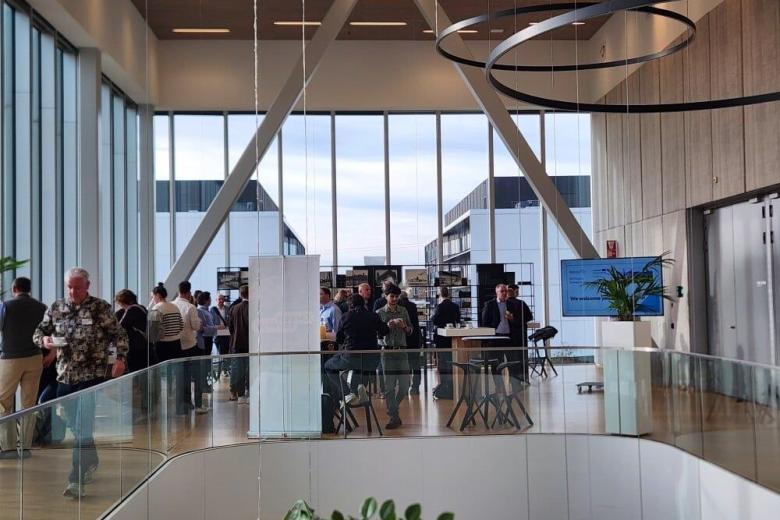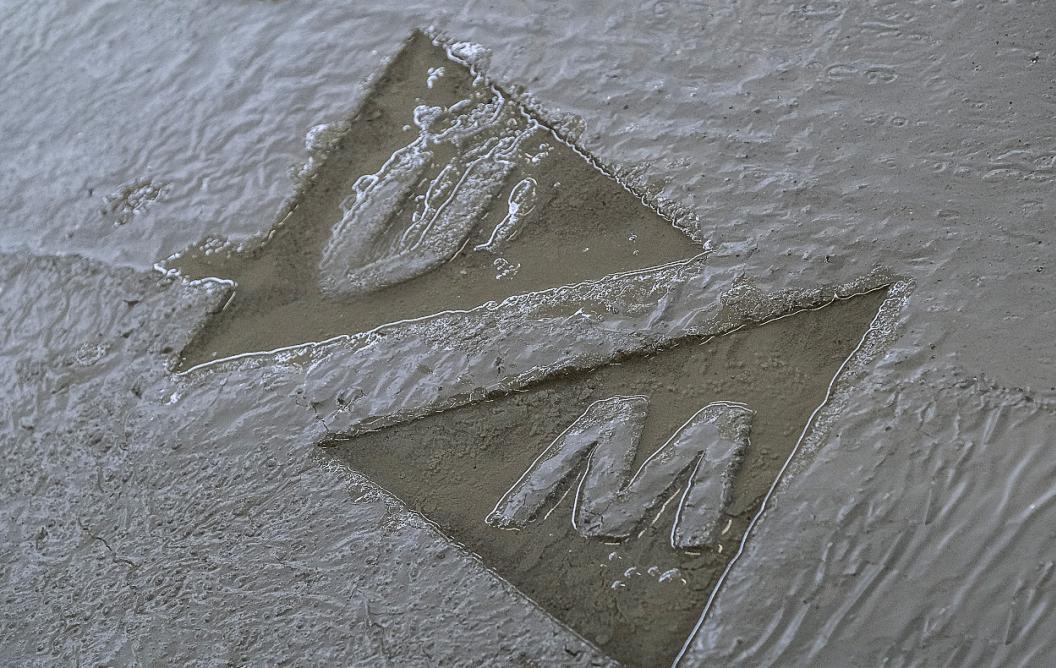Concrete progress for ETpathfinder
A lot of talk has been going around about the prototype for a new generation of gravitational wave detectors: ETpathfinder. And now, after many months of careful planning and preparation, the first visible steps towards realisation are finally complete.
The location of this innovative laser-interferometer is the former transport hall of a local newspaper. The concrete floor that will serve as a low-vibration base for ETpathfinder is poured and drying as we speak.

Keep vibration
ETpathfinder will be a testbed to measure incredibly small length changes, equivalent to a tiny fraction of the size of proton. To achieve this mindboggling sensitivity ETpathfinder has to sit on a floor that is extra stable.
ETpathfinder project leader Stefan Hild explains: “In order to make the floor very stable, it sits on 169 pillars which have been drilled into the ground and it is made out of two separate parts: The other part is connected to the building itself with all its noise from ventilation system and humans, and then there is an inner part of the floor on which the core of ETpathfinder will sit. Splitting the floors guarantees that ETpathfinder will not feel any of the movement of the building itself and for instance the wind pushing against the building walls and therefore move the ground.”
It is a unique project with unusual challenges and that makes it extra special to be able to contribute to this.
- Construction Project manager Ralph Herben
Building the clean room
The concrete will take two weeks to dry, after which the building of the installations can commence. The tender is currently underway for the special clean room covering a volume of 6000 m3. The construction of this clean room will take place between October 2020 and February 2021. The construction of ETpathfinder itself will start in March 2021.
Splitting the floors guarantees that ETpathfinder will not feel any of the movement of the building itself.
- ETpathfinder project leader Prof. Stefan Hild
About ETpathfinder
ETpathfinder is a R&D infrastructure for testing and prototyping innovative concepts and enabling technologies for the Einstein Telescope, the first of a new class of future gravitational wave observatories.
The discovery of gravitational waves from merging black holes and neutron stars by Advanced LIGO and Advanced Virgo marked the beginning of new era in observing our universe and scientist are keen to fully open up this new window to the (dark side of the) cosmos.
ET will detect several hundred thousands gravitational wave signals per year and allow us listen to the sound of merging black holes across the entire universe. For the first time, researchers will be able to study the precise structure of neutron stars, the birth of black holes and the structure of the universe immediately after the Big Bang.
Also read
-
A strong education network for Brabant and Limburg: better alignment, less dropout
On November 24, 2025, secondary schools (VO) and higher education institutions (HO) in Brabant and Limburg will sign up for the Education Network South Netherlands: one VO-HO network that will improve the flow of students to further education and reduce dropout rates.

-
AMIBM hosts the final Realise-Bio conference
The Aachen Maastricht Institute of Biobased Materials (AMIBM) hosted last week the third and final Realise-Bio annual conference, bringing together the Dutch and German bioeconomy ecosystems at the Brightlands Chemelot Campus.

-
Teacher Information Points at UM
UM faculties now host Teacher Information Points (TIPs) that offer local, “just-in-time” and on-demand support for teaching staff. The aim is simple: to provide help that is closely connected to day-to-day teaching practice.

